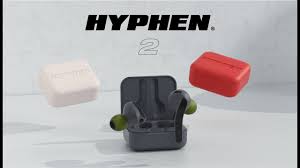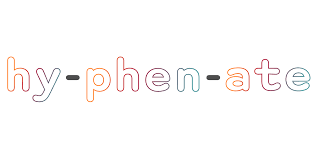Hyphen Confusion (or should that be 'hyphen-confusion'?)
Double-barelled names are becoming more and more current as society gets used to women not changing their last names upon getting married, but double-barelling it with their husband’s (sometimes, rarely, joined by those very husbands!), or passing their maiden name on to their double-barelled children. Not even speaking of all those other kinds of non-heterosexual non-married unions that, thankfully, are possible today. For the record, double-barelled names are the norm in Iberian cultures. It’s all got to do with the level of importance families have, and advances in gender equality. Or should that be gender-equality?

And here be the crux: rules for hyphenation are pretty loose. Of course, some rules make a lot of sense in the name of avoiding confusion, homographic and otherwise, such as ‘un-ionized’ and ‘unionized’. I also love ‘man-eating shark’ and ‘man eating shark’. It also makes sense to avoid the ungainly looks of vowel clash (‘anti-inflammatory’, as opposed to ‘anti inflammatory’, or even worse ‘antiinflammatory’). I once saw someone write ‘no-one’ and never looked back.
Apart from the prefix- and disambiguation-use of the hyphen (and the floating hyphen that just occurred), hyphenation is pretty much a matter of personal choice. New words tend to be hyphenated until people get used to them: think of us 90s kids laboriously typing out ‘e hyphen mail’ before we became stressed adults hardly having time to write ’email’. More than habituation, it’s the increase, speed, and informality of digital communication which are ringing the death knell to the humble but crucial hyphen. Nobody (make that ‘no-one’) has time for that little parallel line anymore, and so, the Shorter Oxford English Dictionary of 2007 has kicked out hyphenation of a whopping 16.000 words, including such gems as ‘pot-belly’. ‘Pot belly’ is just not the same!
And truly, it is not the same.
Hyphens are ambivalent creatures: they separate – and they connect.

They help us see through the thicket of words precisely by disconnecting the connection, and at the same time, they connect what’s previously been disconnected.
Punctuation status: it’s complicated.
So, if the hyphen highlights simultaneous (dis)connection, then, one imagines, it makes a lot of difference if nouns like ‘pot-belly’ or ‘ice-cap’ have an actual umbilical cord, a visual rope that ties them together. A wedding-ring as it were.
A hyphen is the simile of punctuation marks. It establishes a sudden, unexpected link, a levelness, balancing this against that. This is like that, and that is like this. Both terms still remain discreet. A simile is not a metaphor, merging, as it does, two original terms in mysterious ways.
A hyphen is just that, a double-barelled name that tells you that this child came from these two people. On second thoughts, hyphens aren’t even similes, they’re the bringers of real equality. There’s no comparison implied. There’s no directionality, object A being seen in terms of object B. Both words before and after the hyphen, no matter how long or short they are, no matter if they’re Latinate, or Germanic, or even as small asthe ‘in’ of the ‘mother-in-law’ — hyphens establish and maintain equality. Any words, all words, just…connect.
And doesn’t Sidney say compounding is the beauty mark of any language? Let’s keep compounding with that little unassuming line hovering in the horizon. Unassuming, but adamant. Here to stay.
For the history of the hyphen, check out Shady Characters by Keith Houston
Interesting starting points for more research could be: linguistic/cognitive science studies on the hyphen slowing down the speed of reading, and the implications of that for readers of different ages and visual abilities, as has been done a couple of times in the community. But that’s for another post. [last updated 30 August 2022]

